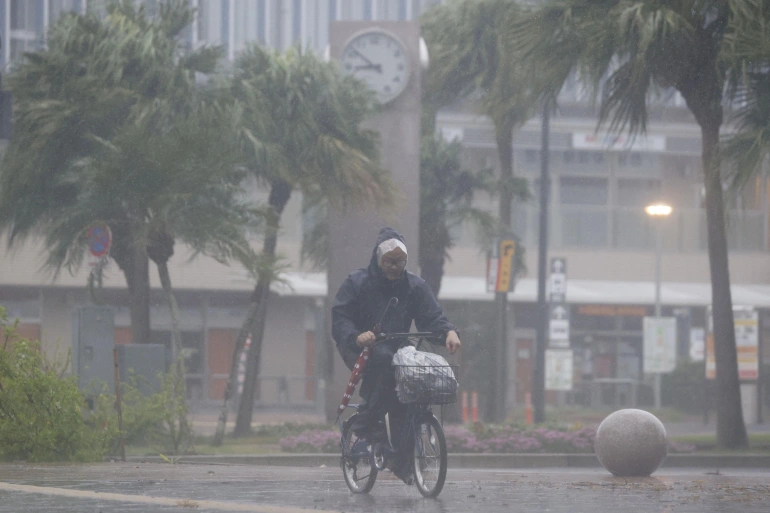Typhoon Nanmadol, which made landfall in Japan overnight, was bringing high gusts and a lot of rain on Monday, forcing millions of residents to evacuate.
Since making landfall on Sunday evening in Kagoshima city in the southwest area of Kyushu, the strong system has lessened, but it nevertheless uprooted trees, shattered windows, and left rivers nearly overflowing.
As the typhoon moved over Kyushu, one person was killed and 50 others were injured, according to national broadcaster NHK. The figures were not immediately confirmed by the authorities.
According to his office, Prime Minister Fumio Kishida will postpone his travel by one day to check on storm damage before leaving for the UN General Assembly on Monday as planned.
The Japan Meteorological Agency issued a warning that river levels in Miyazaki prefecture were high because certain locations there received more rain in a single day than they typically do in the entire month of September.
According to Yoshiyuki Toyoguchi from the land ministry, “even a minor amount more extra rainfall could cause the water level to increase, so please remain attentive regarding flooding and landslides.”
Even yet, damage thus far seems to be rather minor given the storm’s severity, which was evident from the gusts of wind that reached 234 kilometers per hour when it hit the coast.
An official in charge of crisis management in Miyazaki’s Saito city told AFP that the typhoon has almost completely dissipated today and that the rain and wind are also now abating.
He stated, declining to be identified, “but power is down in some parts […] we’re also hearing from numerous residents that electrical cables have been damaged and trees have been collapsed.”
According to him, flooding is also hurting other locations. Officials “think there are still many aspects of the devastation we’re still to grasp,” he continued.
Rare “special warnings,” which are only issued when meteorological events seen every few decades are predicted, have been decreased for Kagoshima and Miyazaki prefectures.
On the final day of a vacation weekend in Japan, however, 9.6 million people were still under varying levels of evacuation alerts.
Authorities have occasionally found it difficult to persuade citizens to leave their houses during extreme weather occurrences because the warnings are not legally required.










